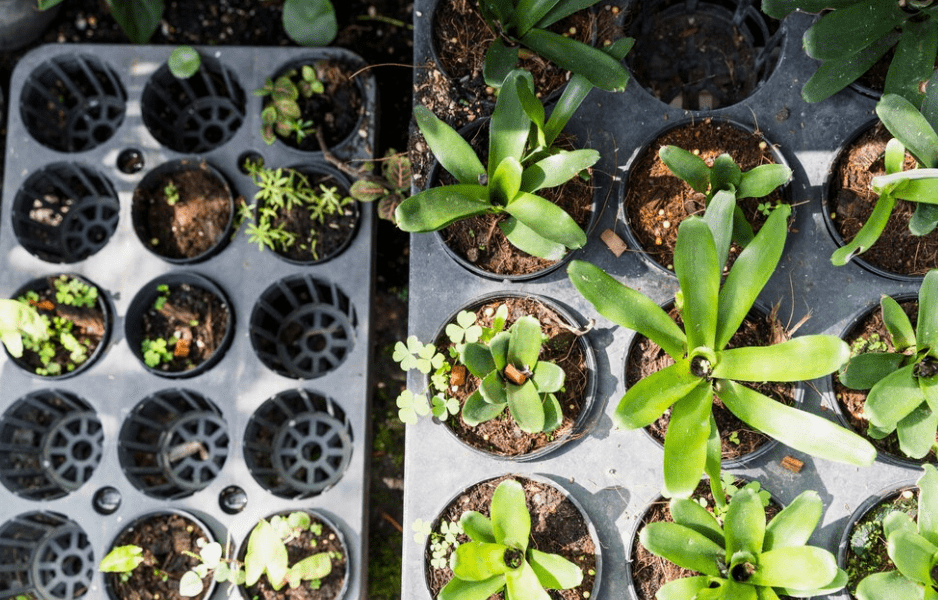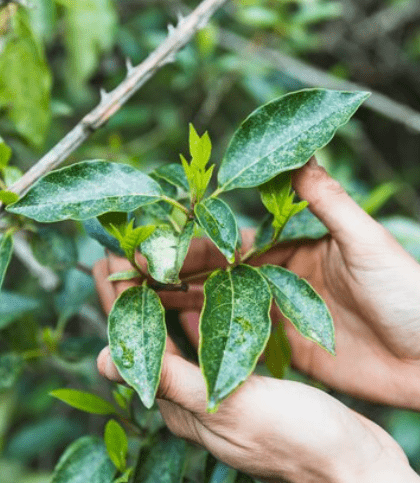
Nourishing Your Ficus: A Guide to Choosing the Best Fertilizer for Ficus Trees
When it comes to nurturing your beloved ficus tree, choosing the right fertilizer is paramount. Ficus trees, with their lush foliage and elegant stature, add a touch of greenery and elegance to any indoor or outdoor space. However, to ensure their health and vibrancy, providing them with the proper nutrients is essential. In this comprehensive guide, we will delve into the world of ficus tree fertilizer, exploring the best options to promote robust growth and lush foliage.
Ficus trees are beloved for their lush foliage and elegant stature, but in order to keep them healthy and vibrant, it’s important to provide them with the proper nutrients through fertilization. When choosing a fertilizer for your ficus tree, it’s important to consider the specific needs of the plant. Look for a fertilizer that is rich in nitrogen, as this will help promote healthy leaf growth. Additionally, a balanced fertilizer with a 3:1:2 ratio of nitrogen, phosphorus, and potassium is ideal for ficus trees. It’s important to fertilize your ficus tree regularly during the growing season, typically from spring to fall, but be mindful not to over-fertilize as this can lead to nutrient burn. By selecting the right fertilizer and fertilizing your ficus tree properly, you can promote robust growth and lush foliage, ensuring that your tree remains healthy and vibrant for years to come.
Table of Contents
ToggleUnderstanding Ficus Trees
1. Overview of ficus trees, including common species and characteristics

Ficus trees are a popular choice for indoor and outdoor landscaping due to their lush, vibrant foliage and elegant appearance. Common species of ficus trees include the Ficus benjamina, also known as the weeping fig, the Ficus lyrata, or fiddle-leaf fig, and the Ficus elastica, or rubber tree. These trees are known for their air-purifying properties and are relatively easy to care for. Ficus trees thrive in bright, indirect light and require well-draining soil to prevent waterlogging. They are also sensitive to changes in their environment, so it’s important to keep them in a stable temperature and humidity range. With the right care and attention, ficus trees can be a beautiful and rewarding addition to your home or garden.
2. Discuss the natural habitat and environmental preferences of ficus trees
Ficus trees are native to tropical and subtropical regions and thrive in warm, humid environments. In their natural habitat, ficus trees can be found in rainforests, where they receive plenty of indirect sunlight and consistent moisture. They prefer well-draining, nutrient-rich soil and can be sensitive to changes in temperature and humidity.
When growing ficus trees in a home or garden setting, it’s important to replicate their natural habitat as much as possible. This includes providing them with bright, indirect light, consistent moisture, and stable temperatures. Ficus trees are also sensitive to drafts and sudden changes in their environment, so it’s important to keep them in a stable, protected location.
Overall, ficus trees thrive in conditions that are warm, humid, and provide them with plenty of indirect sunlight. By understanding and replicating their natural habitat, you can ensure that your ficus tree remains healthy and vibrant.
3. Highlight the nutritional requirements of ficus trees for optimal growth
Ficus trees have specific nutritional requirements for optimal growth. They need well-draining, nutrient-rich soil to thrive. It’s important to provide them with a balanced fertilizer that contains essential nutrients such as nitrogen, phosphorus, and potassium. Additionally, ficus trees require consistent moisture and are sensitive to changes in temperature and humidity. They also thrive in bright, indirect light and are sensitive to drafts and sudden changes in their environment. By understanding and replicating their natural habitat, you can ensure that your ficus tree remains healthy and vibrant.
Types of Fertilizers for Ficus Trees

1. Explore different types of fertilizers available for ficus trees, including granular, liquid, and slow-release formulations
Granular fertilizers are easy to apply and provide a slow release of nutrients over time. Liquid fertilizers are quickly absorbed by the roots and can be applied directly to the soil or as a foliar spray. Slow-release fertilizers provide nutrients gradually over an extended period of time, reducing the frequency of applications. Each type of fertilizer has its advantages, so it’s important to choose the one that best meets the specific nutritional needs of your ficus tree.
It’s important to follow the instructions on the fertilizer packaging and avoid overfertilizing, as this can harm the tree. Regular fertilization, along with proper watering and lighting, will help your ficus tree to thrive and remain healthy. Remember to monitor the growth and health of your tree and adjust the fertilization routine as needed to ensure its optimal growth.
2. Discuss the pros and cons of each type of fertilizer
Granular fertilizers are easy to apply and provide a slow release of nutrients over time, making them convenient for busy gardeners. However, they may take longer to see results compared to liquid fertilizers. Liquid fertilizers are quickly absorbed by the roots and can be applied directly to the soil or as a foliar spray, providing a quick boost of nutrients. However, they may require more frequent applications. Slow-release fertilizers provide nutrients gradually over an extended period of time, reducing the frequency of applications and ensuring a steady supply of nutrients. However, they may be more expensive than other types of fertilizers. It’s important to consider the specific nutritional needs of your plants and choose the type of fertilizer that best meets those needs. Be sure to follow the instructions on the fertilizer packaging and avoid overfertilizing, as this can harm your plants. Regular fertilization, along with proper watering and lighting, will help your plants to thrive and remain healthy. Remember to monitor the growth and health of your plants and adjust the fertilization routine as needed to ensure their optimal growth.
3. Provide guidance on choosing the best fertilizer based on ficus tree species, age, and growth stage
Ficus trees can have different nutritional needs based on their species, age, and growth stage. It’s important to select the right type of fertilizer to ensure that your ficus tree gets the nutrients it needs to thrive. For younger ficus trees, a balanced, slow-release fertilizer with a higher nitrogen content can promote healthy growth. Older ficus trees may benefit from a fertilizer with a lower nitrogen content and higher phosphorus and potassium levels to support overall health and flowering. Ficus trees that are actively growing may require more frequent applications of fertilizer to support their growth. Slow-release fertilizers can provide nutrients gradually over time, reducing the need for frequent applications. Be sure to follow the instructions on the fertilizer packaging and avoid overfertilizing, as this can harm your plants. It’s important to monitor the growth and health of your ficus trees and adjust the fertilization routine as needed to ensure their optimal growth.
Essential Nutrients for Ficus Trees

Ficus trees, like all plants, require certain essential nutrients to thrive. It’s important to select the right type of fertilizer to ensure that your ficus tree gets the nutrients it needs. For younger ficus trees, a balanced, slow-release fertilizer with a higher nitrogen content can promote healthy growth. This is because nitrogen is essential for leafy green growth. Older ficus trees, on the other hand, may benefit from a fertilizer with a lower nitrogen content and higher phosphorus and potassium levels to support overall health and flowering. Ficus trees that are actively growing may require more frequent applications of fertilizer to support their growth. Slow-release fertilizers can provide nutrients gradually over time, reducing the need for frequent applications. Be sure to follow the instructions on the fertilizer packaging and avoid overfertilizing, as this can harm your plants. It’s important to monitor the growth and health of your ficus trees and adjust the fertilization routine as needed to ensure their optimal growth.
Fertilization Schedule and Application
When it comes to fertilizing your ficus tree, it’s important to select the right type of fertilizer to ensure that your tree gets the nutrients it needs. For younger ficus trees, a balanced, slow-release fertilizer with a higher nitrogen content can promote healthy growth, as nitrogen is essential for leafy green growth. Older ficus trees may benefit from a fertilizer with a lower nitrogen content and higher phosphorus and potassium levels to support overall health and flowering. Ficus trees that are actively growing may require more frequent applications of fertilizer to support their growth. Slow-release fertilizers can provide nutrients gradually over time, reducing the need for frequent applications. It’s important to follow the instructions on the fertilizer packaging and avoid overfertilizing, as this can harm your plants. Monitoring the growth and health of your ficus trees and adjusting the fertilization routine as needed will ensure their optimal growth.
Signs of Nutrient Deficiency and Excess
When it comes to fertilizing your ficus tree, it’s important to pay attention to signs of both nutrient deficiency and excess. Nutrient deficiency can manifest as yellowing leaves, stunted growth, or leaf drop. On the other hand, excess nutrients can cause leaf burn, distorted growth, or even damage to the roots. It’s important to monitor the growth and health of your ficus trees and adjust the fertilization routine as needed to ensure their optimal growth. Be sure to follow the instructions on the fertilizer packaging and avoid overfertilizing, as this can harm your plants. By paying attention to the signs of nutrient deficiency and excess, you can ensure that your ficus trees are getting the right balance of nutrients for their growth and health.
Special Considerations for Indoor Ficus Trees

When it comes to indoor ficus trees, there are some special considerations to keep in mind. First, it’s important to choose the right type of fertilizer for your indoor ficus tree. Slow-release fertilizers can provide nutrients gradually over time, reducing the need for frequent applications. Be sure to follow the instructions on the fertilizer packaging and avoid overfertilizing, as this can harm your plants.
Additionally, it’s important to pay attention to signs of both nutrient deficiency and excess. Nutrient deficiency can manifest as yellowing leaves, stunted growth, or leaf drop, while excess nutrients can cause leaf burn, distorted growth, or damage to the roots. Monitoring the growth and health of your ficus trees and adjusting the fertilization routine as needed will ensure their optimal growth.
In conclusion, taking special considerations for indoor ficus trees, such as choosing the right fertilizer and monitoring nutrient levels, will help to ensure the health and growth of your plants.
Discuss the unique challenges of fertilizing ficus trees grown indoors, such as limited light and airflow
Fertilizing ficus trees grown indoors can be challenging due to limited light and airflow. Indoor ficus trees may not receive as much natural sunlight as outdoor plants, so it’s important to choose a fertilizer that provides the necessary nutrients for growth in low-light conditions. Additionally, limited airflow indoors can affect the distribution of nutrients to the roots of the tree. Using a slow-release fertilizer and monitoring the plant for signs of both nutrient deficiency and excess can help ensure the health and growth of indoor ficus trees. It’s important to adjust the fertilization routine as needed to meet the specific needs of indoor plants to promote optimal growth.
Highlight the importance of monitoring indoor ficus trees closely for signs of nutrient deficiency or excess
Nutrient deficiency can manifest as yellowing leaves, stunted growth, or leaf drop, while excess nutrients can cause leaf burn, distorted growth, or damage to the roots. Monitoring the growth and health of your ficus trees and adjusting the fertilization routine as needed will ensure their optimal growth. In conclusion, taking special considerations for indoor ficus trees, such as choosing the right fertilizer and monitoring nutrient levels, will help to ensure the health and growth of your plants.
In conclusion, choosing the best fertilizer for your ficus trees is essential for their growth and health. It’s important to consider the specific needs of your ficus, such as the type of soil it’s planted in and its current condition. By selecting the right fertilizer and following the proper care and nourishment guidelines, you can ensure that your ficus trees will thrive and bring beauty to your home or garden. Don’t forget to regularly monitor the growth and health of your ficus trees to make adjustments as needed.
Frequently asked questions And Answer
The best type of fertilizer for ficus trees is a balanced, water-soluble fertilizer with a ratio of 10-10-10 or 20-20-20, which contains equal parts of nitrogen, phosphorus, and potassium.
Ficus trees should be fertilized every 4-6 weeks during the growing season, which is typically spring and summer. During the fall and winter, you can reduce the frequency to every 8-12 weeks.
Yes, organic fertilizers can be used for ficus trees. Look for a balanced organic fertilizer that contains nutrients like bone meal, compost, or seaweed extract.
Slow-release fertilizers can be beneficial for ficus trees, as they provide a steady supply of nutrients over time. However, be sure to follow the instructions on the packaging and not over-fertilize.
Yes, the same type of fertilizer can be used for both indoor and outdoor ficus trees. However, be mindful of the specific needs of your tree and adjust the application frequency accordingly.
There are several reputable fertilizer brands that offer products specifically formulated for ficus trees, such as Miracle-Gro, Jobe’s, and Osmocote. Be sure to choose a fertilizer that meets the specific needs of your ficus tree.
If your ficus tree is showing signs of slow growth, yellowing leaves, or overall poor health, it may be in need of fertilizer. A soil test can also help determine if the tree is lacking in essential nutrients.
Yes, over-fertilizing can be harmful to ficus trees and may lead to fertilizer burn or nutrient imbalances. Always follow the instructions on the fertilizer packaging and avoid excessive application.
